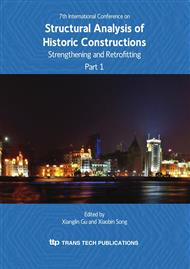[1]
Barton, C and Nishenko, S (1997). Natural Disasters: Forecasting Economic and Life Losses, US Geological Survey. [Online]. Available: http: /pubs. usgs. gov/fs/natural-disasters/index. html.
DOI: 10.3133/5485
Google Scholar
[2]
Coastal Construction Manual (FEMA 55), US Federal Emergency Management Agency.
Google Scholar
[3]
Hsu, S A, Braud, D, and Blanchard B (2006). Rapid Estimation of Maximum Storm Surges Induced by Hurricanes Katrina and Rita in 2005., Coastal Studies Institute, Louisiana State University.
Google Scholar
[4]
Kallaby, J (2007). Severe Hurricanes - Facing the Challenge, Part 1: Dual Concept of Strength and Safety., Structure Magazine, 9.
Google Scholar
[5]
McGee, B D, Goree, B, Tollett, R W, Woodward, B K, and Kress, W H (2006).
Google Scholar
[6]
Powell, M D, and Reinhold, T A (2007). Tropical Cyclone Destructive Potential By Integrated Kinetic Energy., Bulletin of The American Meteorological Society, 4, 513-526.
DOI: 10.1175/bams-88-4-513
Google Scholar
[7]
Seed, R B, et al. (2006). Investigation of the Performance of the New Orleans Flood Protection Systems in Hurricane Katrina on August 29, 2005 - Final Report, U.S. Geological Survey.
Google Scholar
[8]
Sparks, P (2007). Heritage Damage and Recovery on the Mississippi Coast, in Proceedings of the 2007 Structures Congress. American Society of Civil Engineers, Structural Engineering Institute. Long Beach California.
Google Scholar
[9]
Ward, S N (2009). A Tsunami Ball Approach to Storm Surge and Inundation: Application to Hurricane Katrina, 2005., International Journal of Geophysics, (2009).
DOI: 10.1155/2009/324707
Google Scholar
[10]
White, T D, et al. (2006). Coast in the Eye of the Storm: Hurricane Katrina: August 29, 2005., Bagley College of Engineering, Mississippi State University. Technical Report CMRC 06-1.
Google Scholar


